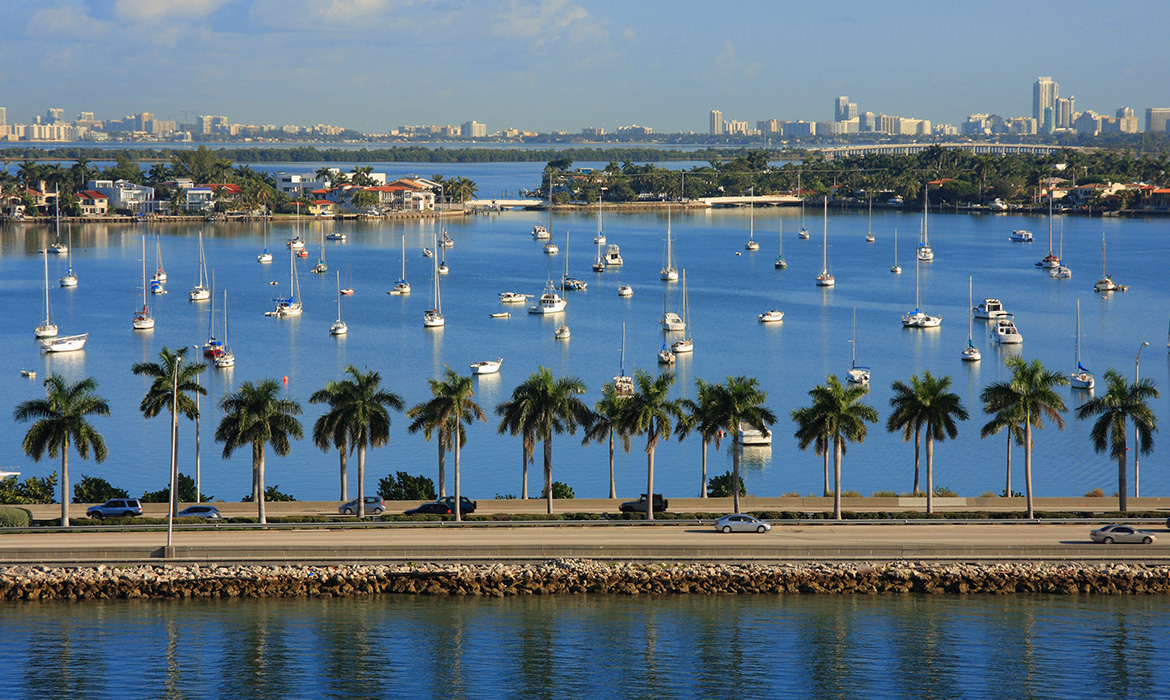The trials and tribulations of connecting the beach to the mainland: from trolleys and streetcars to monorails and pods.
Miami Dade’s current bus routes from the mainland to the beach have among the highest ridership in the region. Approximately 14,000 bus riders travel the Macarthur causeway alone each day. The connection between Downtown Miami and South Beach has long been labeled a priority for a rapid transit connection. The first study was commissioned in 1988. Another engineering study was commissioned in 2003 as an agreement between Mayor Manny Diaz and the city of Miami Beach. The route has been featured in the County SMART plan, the half-penny tax has been passed, and multiple proposals have been commissioned, however, even a fundamental transit system has yet to be decided.
As recently as last week, the Herald released an article with a slew of options that the county transportation department is considering, including streetcars, light rail, personal rapid transit, dedicated bus lanes, metro mover, and a monorail system. After 30 years of studying, and millions in consultant fees we are no closer than in 1988 to selecting and funding an appropriate option for connecting these important nodes.

Proposal for light rail along Washington Ave. by the French Company Alstom.
After the SMART plan was enacted in 2016, Miami Beach city commissioners directed the Mayor to begin talks of adding some transit based loop on the beach that would connect to the future Baylink (now that the Baylink aspect was a county initiative based on the SMART plan). The proposal was a light rail system from 5th ST to Dade Blvd along Washington Ave. The aspiration of then mayor, Phillip Levine was to build the project as an indication to the county that the City of Miami Beach was serious about the Baylink. The county and city of Miami were initially receptive and offered help.
However, later that year, business owners in Miami Beach, MDC Tranportation Director Alice Bravo, and some city commissioners became opposed to the project, citing fears of cost increases, construction time, traffic, and more. Alice Bravo cited that the cost of the system was too high (at $600 million) and different systems must be looked at, as it should be the same as the system that crossed the bridge. Mayor Levine backed off and the project was not to move forward, meaning the ball was back in the County’s court.
In February of 2018, Mayor Gimenez and Director Bravo began to push Personal Rapid Transit (PRT) as a solution to Baylink. The smaller, self-driving, vessels need only half the track space as a traditional rail. Their purpose is usually however on more dense areas of the city with many stops, The PRT can bypass stops wherein a usual rail or bus system must stop at every station. The Baylink is a long corridor with very few stops, so this aspect of PRT is not useful.
The weight of putting a metro mover, monorail, or dedicated lane on Macarthur seems to be where a lot of costs are dedicated. Those in charge are fishing for a technology to innovate their way out of the cost of beefing up the structure on the bridges. The other commissioners seem to agree and greenlit PRT as a viable option for study.

Sketch of Metro Mover on Macarthur Causeway
It is now February 2019, and none of the studied alternatives have been selected. The estimated cost for extending the metro mover or creating a monorail is around $1 billion. The estimated cost for a streetcar or light rail is $800 million, close to the $600 million that the county found unacceptable during the discussion of the Miami Beach light rail. The county still finds itself looking for alternatives, trying to make an extra lane on the existing causeway that could accommodate a rapid transit bus, as they did on the South Dade Transitway. This, however, is not the South Dade Transitway. The Baylink has been a 30-year aspiration to connect two of the densest areas of the county, known internationally for hospitality, commerce, residence, and retail. The county currently is completing a $20 million feasibility report with Parsons, let’s demand that it be the last.
Be sure to follow us on Facebook, Instagram, and Twitter!
—
Sources:
https://www.miamitodaynews.com/news/030508/story3.shtml
https://www.miamitodaynews.com/2018/03/06/personal-rapid-transit-moves-study-baylink-route/
https://www.miamiherald.com/article225634680.html
https://www.miamitodaynews.com/2018/02/28/miami-dade-now-plans-personal-rapid-transit-beach-link/


